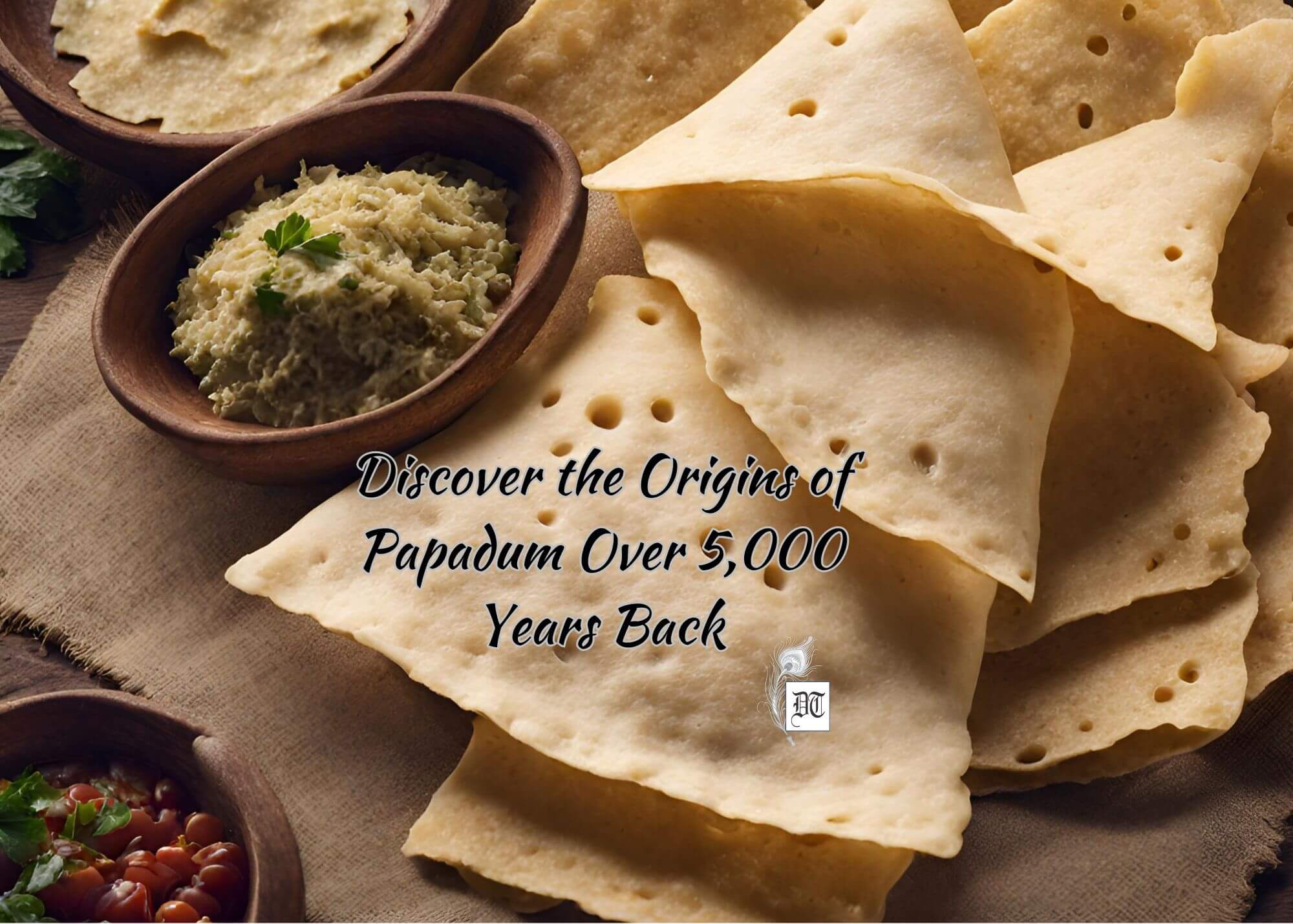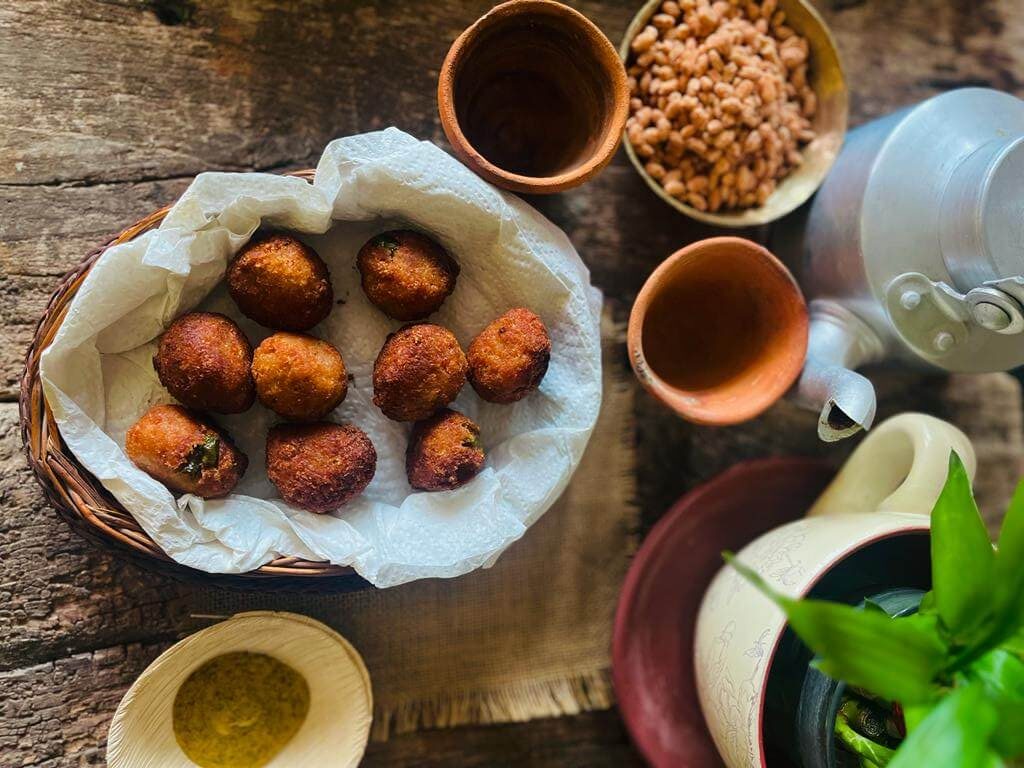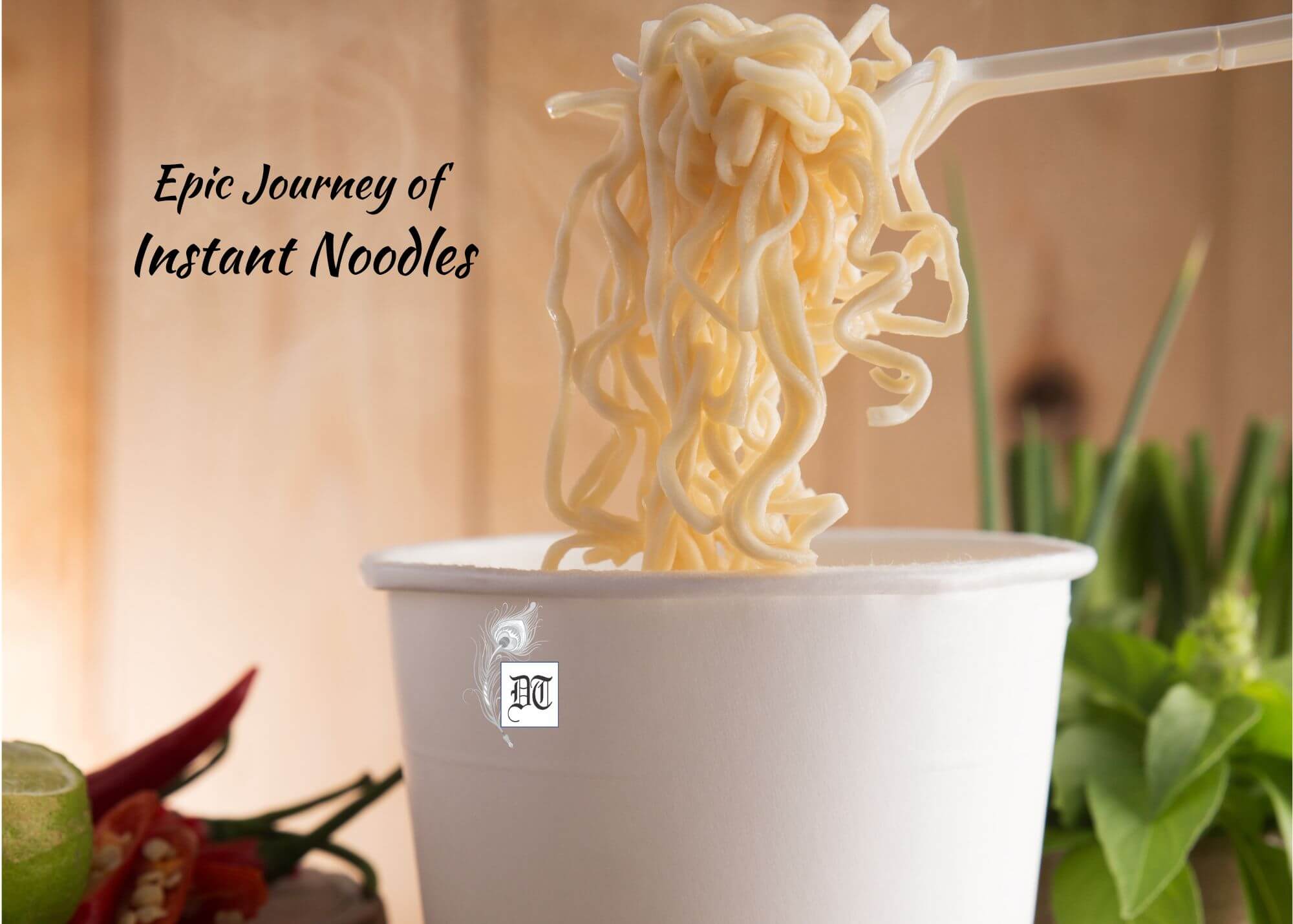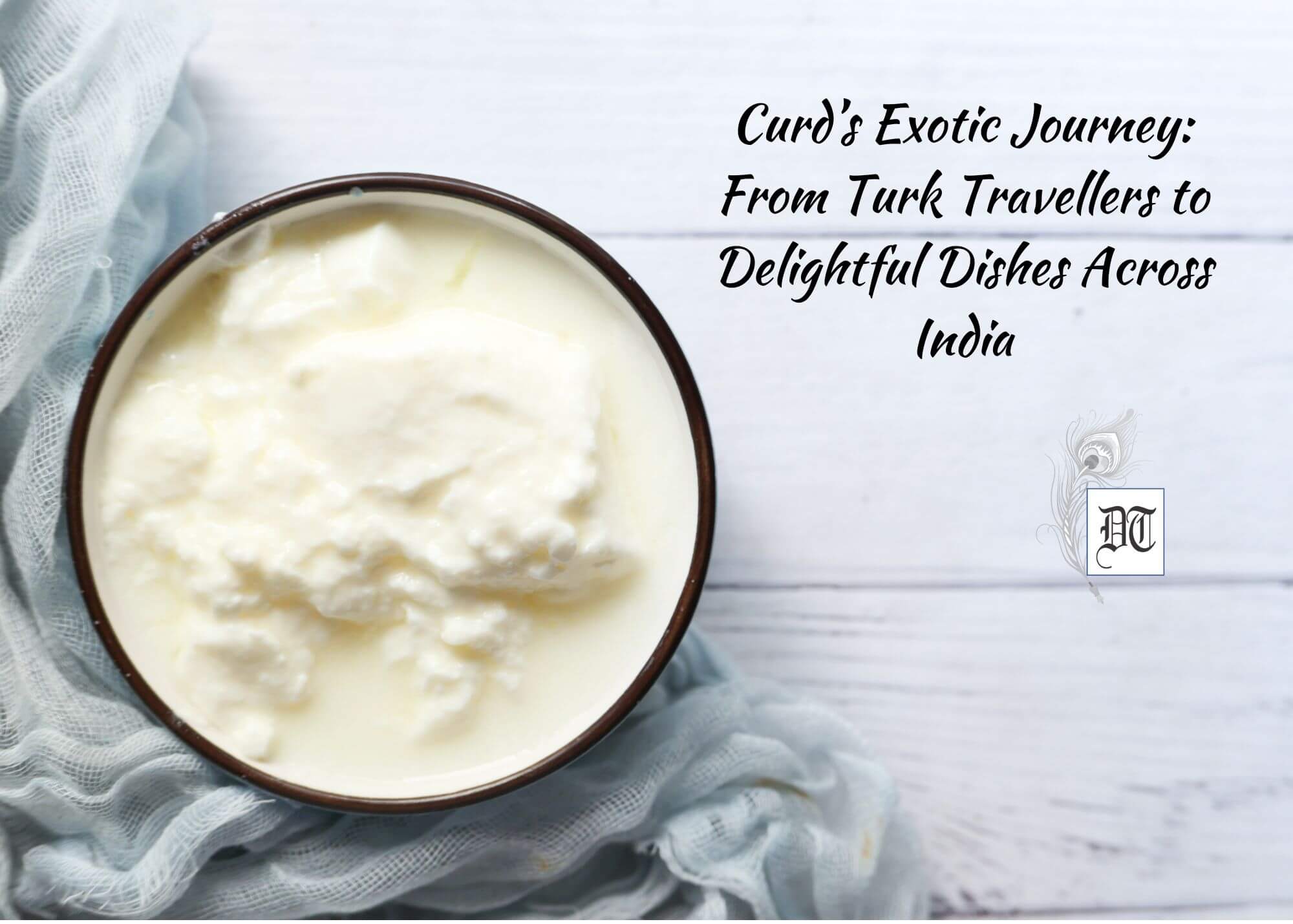The name, Naan, was first seen in the English language, in 1810, in William Tooke’s travelogue. Numerous languages in Central Asia and South Asia refer to it as a kind of flat bread. In Persian it means bread, therefore its Iranian lineage is certain. The Balochi Nagan, Parthian Non, Sogdian Nyn, Pashto Neyan seem to be the same thing. A wintry evening, where you can stand next to a hot clay oven dug a pit in the ground and watch a steaming Naan emerge out of the orange innards of the wondrous Tandoor. That is what keeps us linked in an unbreakable chain to our earliest times as humans on earth. In India and Pakistan, the Naan is lovingly brushed with a glaze of butter or pure ghee. From this week, we begin a new column, the History-Mystery of Food. Lily tells us about Naan, exclusively in Different Truths.
To be an epicure is not a luxury. It’s just the insatiable urge to follow the dictates of one’s salivary glands. When I slurp over a luscious mango, juices dribbling freely, I always wonder where it must have grown and who would have sat guard under the trees all afternoon. When the aroma of a complex biryani tickles my nostrils, I bless the royal khansamah (native male cook), who must have meticulously put it together hundreds of years ago, sweating over a wood fire. Our ancient ancestors ate raw food till the revolutionary advent of fire after which life changed dramatically. What I am going to talk about today is the fascinating journey of wheat till it became a Naan.
 Starting as a wild grass and reaching our tables in a delicious array of delectable forms of bread, all across the globe, must have been a fun ride. Wheat has been found in pits where human settlements lived 8000 years ago. Actual loaves of bread that were baked in Egypt over 5000 years ago may be seen in the British museum. Wheat grain is said to be the result of a cross of three different species of grass around 10000 BC. In the Stone Age, man learnt to grind the wheat between rocks in order to obtain flour. The Levant region and the Fertile Crescent are the cradles of civilisation and the pioneers of the bread. Botanically, a type of fruit called caryopsis, wheat is now cultivated worldwide, on 220.4 million hectares (2014). The largest area of land for any grain. Since I grew up in North of India, where the staple diet is of various wheat-based flat bread that are baked in flat or slightly conclave griddles called Tawa, like rotis and paranthhas or fried like puris and bhatooras, it is only correct that I talk of the exotic baked bread called Naan.
Starting as a wild grass and reaching our tables in a delicious array of delectable forms of bread, all across the globe, must have been a fun ride. Wheat has been found in pits where human settlements lived 8000 years ago. Actual loaves of bread that were baked in Egypt over 5000 years ago may be seen in the British museum. Wheat grain is said to be the result of a cross of three different species of grass around 10000 BC. In the Stone Age, man learnt to grind the wheat between rocks in order to obtain flour. The Levant region and the Fertile Crescent are the cradles of civilisation and the pioneers of the bread. Botanically, a type of fruit called caryopsis, wheat is now cultivated worldwide, on 220.4 million hectares (2014). The largest area of land for any grain. Since I grew up in North of India, where the staple diet is of various wheat-based flat bread that are baked in flat or slightly conclave griddles called Tawa, like rotis and paranthhas or fried like puris and bhatooras, it is only correct that I talk of the exotic baked bread called Naan.
This name was first seen in the English languag e, in 1810, in William Tooke’s travelogue. Numerous languages in Central Asia and South Asia refer to it as a kind of flat bread. In Persian it means bread, therefore its Iranian lineage is certain. The Balochi Nagan, Parthian Non, Sogdian Nyn, Pashto Neyan seem to be the same thing.
e, in 1810, in William Tooke’s travelogue. Numerous languages in Central Asia and South Asia refer to it as a kind of flat bread. In Persian it means bread, therefore its Iranian lineage is certain. The Balochi Nagan, Parthian Non, Sogdian Nyn, Pashto Neyan seem to be the same thing.
Flour which is raised by yeast fermentation or by dough left from a previous batch gives one excellent results. Milk to soften and curds to leaven are also popular. The lactobacilli and the yeast make for a softer naan due to lactic fermentation. Modern recipes are known to cheat with baking powder or baking soda.
A wintry evening, where you can stand next to a hot clay oven dug like a pit in the ground and watch a steaming Naan emerge out of the orange innards of the wondrous Tandoor. That is what keeps us linked in an unbreakable chain to our earliest times as humans on earth. In India and Pakistan, the Naan is lovingly brushed with a glaze of butter or pure ghee. Families used to sit around the mud Tandoor and eat together, while the Tandoori rotis, paranthhas and Naans were served fresh and hot by the ladies. Love was stronger and hearts were united by the community eating from a Saanjha Chulha (shared or common mud oven). Rose or Khus (vetiver) essences may also be added. Nigella seeds are commonly used for flavouring and adding the black dots to the light surface. Traditionally used to scoop other food like curries and mutton dishes, Naans may also be stuffed with mincemeat and known then as Keema Naan. Cottage cheese or other cheese is also being used now. The Peshawari Naan and the Kashmiri Naan are different as they have a filling of nuts and raisins, making them unique. The Roghani Naan has a sprinkling of sesame seeds. The popular Balti dishes of Pakistan have given rise to a huge family Naan called Karack. It may be shared by all eating at the table. In the United Kingdom, Naan and Chicken Butter Masala are almost a staple combination for the numerous Britishers too.
 The other form of a similar bread is the world famous Amritsari Kulcha. It gained recognition due to its association with the holy city of the Golden Temple, Amritsar. Kulcha is different from a Naan due to two basic reasons. Firstly, it uses baking powder or baking soda to make the bread rise, and secondly, it is mostly round in appearance. A typical Naan is oval or slightly oblong. I personally highly recommend an Amritsari Kulcha with a mashed potato or onion stuffing eaten straight out of a blazing Tandoor and dripping with a fat pat of butter. Just forget the cholesterol gutted arteries and the calories for that one heavenly moment as it melts in your mouth exuding the aroma of Indian spices.
The other form of a similar bread is the world famous Amritsari Kulcha. It gained recognition due to its association with the holy city of the Golden Temple, Amritsar. Kulcha is different from a Naan due to two basic reasons. Firstly, it uses baking powder or baking soda to make the bread rise, and secondly, it is mostly round in appearance. A typical Naan is oval or slightly oblong. I personally highly recommend an Amritsari Kulcha with a mashed potato or onion stuffing eaten straight out of a blazing Tandoor and dripping with a fat pat of butter. Just forget the cholesterol gutted arteries and the calories for that one heavenly moment as it melts in your mouth exuding the aroma of Indian spices.
Naans are now used as bases for mock pizza toppings and as wraps for fillings like cheese, vegetables and meats. They then acquire a fast food avatar. You may dip them in soups or dals and curries. In Burma,  Nan Bya is a breakfast dish served with boiled peas or mutton soup. Luri FICA is the national cake of Rohingya, in Arakan. The Naan-e- Afghani is the national bread of Afghanistan. Baked with cumin or caraway seeds, it is baked in a brick oven over the ground. The fresh smell of baking is known to draw throngs of people to buy and take it home, in cloth bags.
Nan Bya is a breakfast dish served with boiled peas or mutton soup. Luri FICA is the national cake of Rohingya, in Arakan. The Naan-e- Afghani is the national bread of Afghanistan. Baked with cumin or caraway seeds, it is baked in a brick oven over the ground. The fresh smell of baking is known to draw throngs of people to buy and take it home, in cloth bags.
The Ghilaaf Kulcha served with Nihari for breakfast in Lucknow is also a delicacy not to be missed. Another unique kind of Naan is the sumptuously inviting saffron coloured Naan, the Sheermaal. It is a sweet Naan made with sweetened milk and traditionally brushed with saffron. Well I am glad that the Naan travelled Afghanistan, Iran, Tajikistan, Burma, but it also decided to come here to our subcontinent. It’s ours now and we love it fiercely. Many modern versions of the Naan have made appearance. The latest is the Naan Burger! Talk of fusion food.
If you want to try it at home do it in a hot pan and finish it off on a grill. Use yoghurt and be liberal with pure ghee. Also remember the utter importance of nigella (onion) seeds or poppy and sesame seeds. Better still go to the best eatery you know. Sit in a corner and mop up your curry of whatever you fancy with this magical bread originating years ago!
Happy Naaning, dear people!
©Lily Swarn
Photos from the internet.






 By
By

